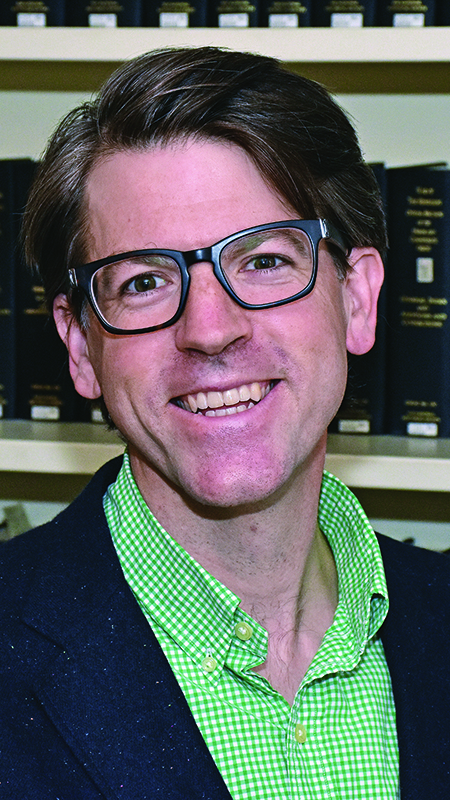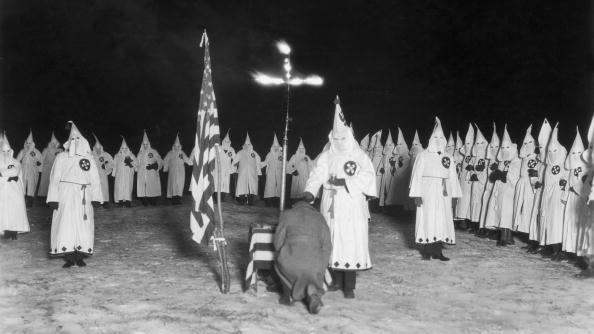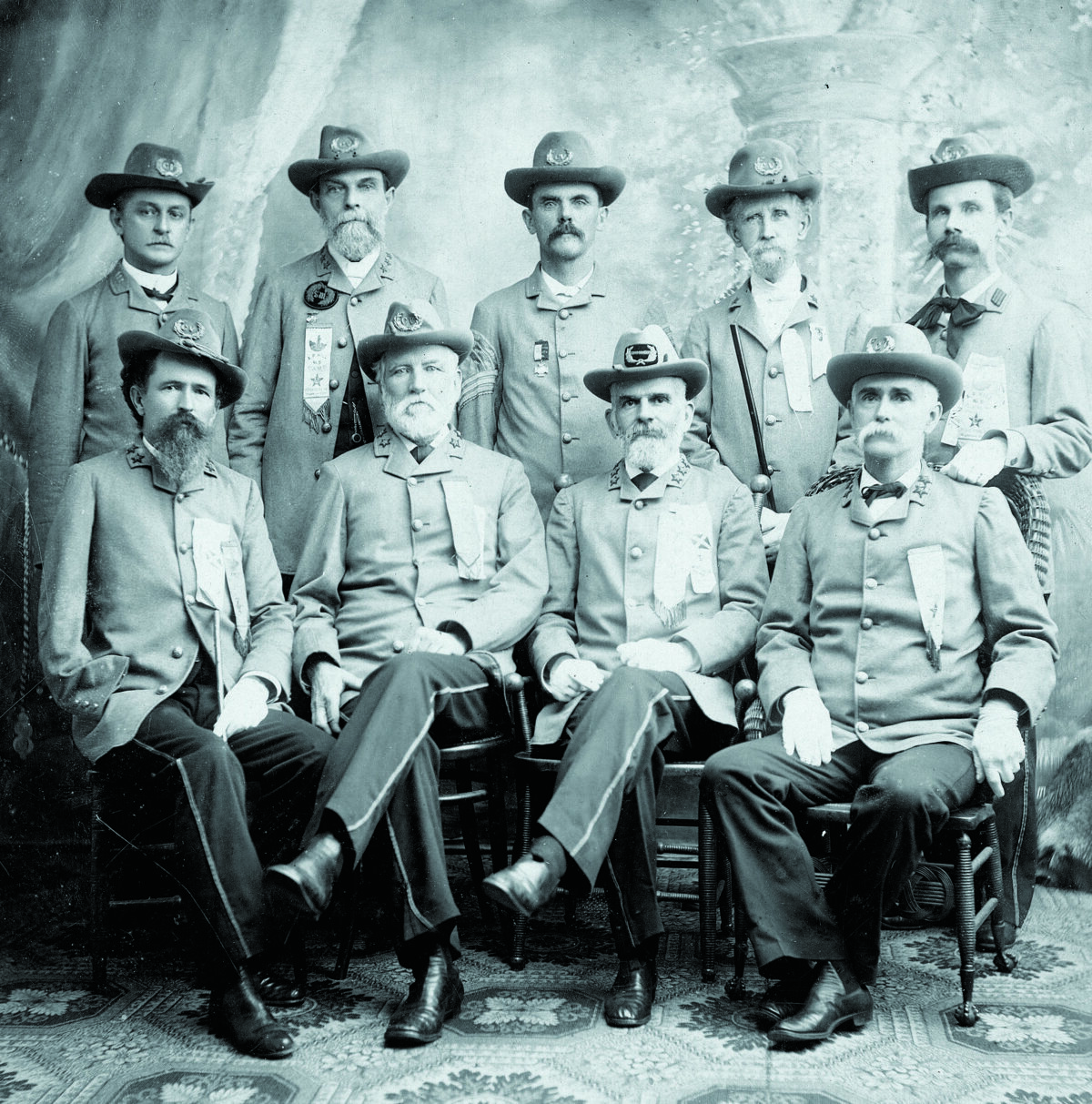HISTORIAN JAMES J. BROOMALL, director of the George Tyler Moore Center for the Study of the Civil War at Shepherd University in West Virginia, examined the writings of upper-class white Southern men from the 1840s to the 1870s. While the intimacy and openness he found altered his view of white Southern masculinity, he also discovered disturbing first-person accounts of initiation rituals involving the Ku Klux Klan in North Carolina. His groundbreaking exploration appears in Private Confederacies: The Emotional Worlds of Southern Men as Citizens and Soldiers published in 2019 in the University of North Carolina Press’ Civil War America series.

CWT: How did you decide to study elite Confederates?
JB: While working on a study of the end of the Civil War. I came across a lot of correspondence from the immediate postwar period between veterans. I was really surprised at the ways in which they spoke to each other, the revelations they were willing to make, the intimacy of their correspondence. It did not align with what I understood about white Southern men and masculinity and that caused me to go deeper into the wartime and the prewar era.
CWT: What did you find?
JB: A slaveholder society, and a society with very strict gender hierarchies, but I also found Southern men to be very feeling. I found the exchanges with loved ones to be very intimate. I think because of the wartime experiences they began to interact with other men in very familylike ways, forming soldier communities that were almost like families, and the bonds continue into the postwar era.
CWT: How was that different from before the war?
JB: I argue that white Southern men in the antebellum era were defined very much by independence, a strict public persona they thought that was necessary in a slaveholding society. They governed themselves as they governed others: very strictly. They were permitted very few public disclosures. They went into the war with a great deal of certitude, very assured that their social, racial order was the correct one. During the wartime era they became shaken and unsure of themselves.
CWT: What do you see after the war?
JB: The postwar era was a fierce reaction to the changes enacted by the Civil War. A black male went from property to being able to vote. The emancipation of 3.5 million African Americans, the decisive war that determined the sovereignty of the federal government over the states. White Southerners weren’t just going to accept that war. There is a fierce backlash with the rise of paramilitary organizations and eventually the Ku Klux Klan.
CWT: You describe psychological harm. How is it apparent?
JB: There are many men who have a great deal of trouble reintegrating into civilian life. There are some men who are physically and verbally abusive to their wives, and they in turn shape the family foundation, too. The military and the civilian populations are deeply entwined both in the wartime era and in the postwar era.
CWT: Why are you careful not to use the term PTSD?
JB: I don’t use that term, because it is a post-Freudian term. We understand psychoanalysis and the human brain. They didn’t understand that. They were much more likely to call it soldier’s heart, a physical manifestation of what we know to be psychological illness. When they are describing it, they describe it as almost physical pain, though they are clearly dealing with mental trauma. For example, William J. Clark who had served in the Mexican War and the Civil War, experienced two significant physical traumas over the course of his lifetime and had seen pretty extensive combat. From the outside he looked normal, but he was clearly in a great deal of physical pain. His diary in the years 1867-68 record “in great pain today,…unable to get out of bed today,…my wound hurts a lot today.” We also know from his wife that Clark began to lose a lot of public face because of his bouts with drunkenness. She wrote to a son, “your father is out of his mind.” She says the onus is on you and I to hide this behavior from the world. That’s Southern society in a nutshell. You maintain a public face while behind the scenes the family is sometimes left reeling.
CWT: You also note general apprehension of the future.
JB: Some said it was like “walking in a dream,” they suffered “unrelenting humiliation,” “deeply depressed,” “this profound grief,” and again there is a segment of this population that never really recovered, but for another segment I think what happens is the humiliation transforms into anger. There is massive social upheaval and some widespread violence, especially in the Carolinas, and a lot of the violence is perpetrated by Civil War veterans. There are very tangible linkages that say that the foot soldiers of the Confederacy became the shock troops of the Ku Klux Klan.
CWT: Talk about the Klan initiations.

JB: Two really rare documents deal with the rituals of the Klan. The inductee is in a kneeling position. In some cases, he is blindfolded, and in some cases susceptible to acts of violence against his own person. He himself is almost humiliated and becomes part of, in their words, his brotherhood, a brotherhood bonded by blood. The oath is a blood oath. There is a lot of evidence that suggests that the Piedmont of North Carolina had thousands and thousands of members of the KKK. Doesn’t mean they were necessarily active, but on paper it was a very pervasive organization.
CWT: You uncovered surprising emotional openness. Did that continue after the war?
JB: It does to some extent. Men’s public personas in the postwar era look a lot like those in the prewar era. They become fiercely independent again, present a strong public veneer, reassert white masculinity, reassert a “familiar racial order” and certainly try to usurp African-American rights. That is profoundly clear in the evidence. Whatever uncertainty they may have had during the wartime era, 1863–65, they seemed to have regained their balance after Appomattox. They become fiercely reactive to the world they were inheriting. And they were seeking to actively change it. The sad part of the narrative, in this moment of possibility, is that they create the foundation for the rise of Jim Crow in the late 1880s and early 1890s. To me that doesn’t suggest a man who is uncertain about anything. That suggests a man who is seeking to resurrect what he would have deemed a familiar racial social order.
Interview conducted by Senior Editor Sarah Richardson





